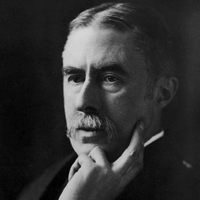To an Athlete Dying Yong by Alfred Edward Housman: Summary and Critical Analysis
When the athlete won the race for the townspeople, they carried him on their shoulders through the town and brought him home. At that time other people were standing by the street clapping their hands to show their happiness. Today also all the runners bring him home on their shoulders and put him at his door, but the entire town is more silent.

Alfred Edward Housman
The athlete is very quick. He knows that glory does not stay longer. So he thinks it better to get away early from the fields. Good name grows quickly and fades away more quickly than the roses.
Death has shut his eyes and he will not know when a new record will be made by someone breaking his own record. After earth has stopped the ears, people’s silence or shout will make no difference to him. Now the crowd will not gather to shout in his praise. The other runners were beaten by the athlete. So their name died before the man. But before the athlete will be beaten, he is advised to die while holding up the cup. Other people will come to see their praised winner and see his weak head after his death and find his garland still unwithered.
The poet is trying to tell us that one should die when one’s fame is at its highest, so that one will always be respected. But if one lives as long as he grows older one’s fame may go down. Therefore, it is useless to be sorry for the famous young man’s death. He will always live by his good name. Through this poem the poet is trying to tell us that the glory is fleeting and the only way a person can capture it and make it last is to die young after achieving greatness. In this way, the person can live forever in the minds of people who remember him at the peak of his powers. Although, Housman does not wish his readers to take this message literally, the undercurrent of cynicism in the poem suggests that life in later years is routine and boring. Consequently, he praises the young athlete for dying before his glory fades. This poem makes the reader think about life and its meaning. The beautiful imagery and rhyme scheme in the poem pleases both the eye and the ear. The poem has seven stanzas. Each stanza consists of two pairs of end-rhyming lines, or couplets. Many of the lines are in iambic tetrameter, having four feet that each consists of an unstressed syllable followed by a stressed syllable.
